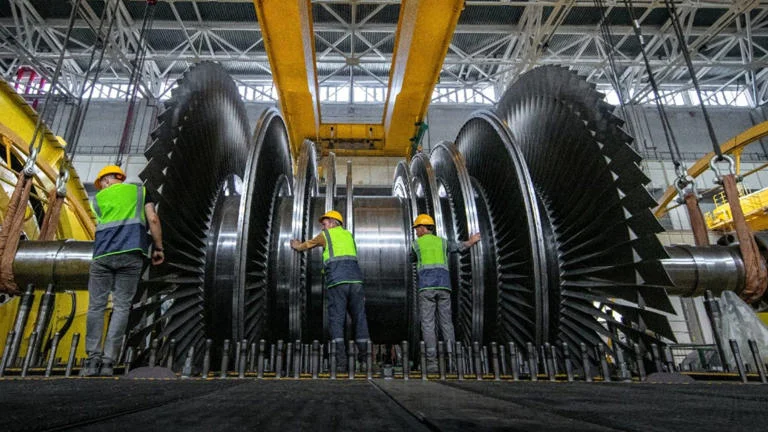
Russia Develops Plasma Engine for Faster Space Travel
According to Russia’s Izvestia newspaper, a revolutionary plasma propulsion system is being developed that could dramatically reduce interplanetary travel time. Unlike conventional rocket engines that depend on fuel combustion, this new system utilises a magnetic plasma accelerator to generate thrust.
How the Plasma Engine Works
“A plasma rocket motor is a type of electric engine. It operates using two electrodes, between which charged particles pass. At the same time, a high voltage is applied,” explained Egor Biriulin, a junior researcher at Rosatom’s scientific institute in Troitsk, speaking to Izvestia.
“This process generates a magnetic field that propels the charged particles out of the engine, giving the plasma a directional motion that creates thrust.”
Plasma Propulsion and Unprecedented Speeds
This innovative approach uses hydrogen as fuel, with the engine accelerating charged particles—electrons and protons—to speeds of 100 km/s (62 miles/s).
“In traditional propulsion systems, the maximum velocity of expelled matter is around 4.5 km/s, limited by the fuel combustion conditions. In contrast, our engine relies on an electromagnetic field to accelerate charged particles, significantly increasing speed,” said Alexei Voronov, First Deputy General Director for Science at the Troitsk Institute, as reported by Izvestia.
A faster journey to Mars, facilitated by the plasma engine, would improve mission efficiency and significantly reduce astronauts’ exposure to cosmic radiation during long-duration space travel, enhancing the safety of space missions.
Development and Testing Progress
Rosatom’s Troitsk Institute has already built a laboratory prototype of the engine, which will now undergo extensive ground testing to refine its operational modes. This will pave the way for developing a flight-ready model, which is expected by 2030.
“The engine operates in a pulse-periodic mode with a power output of 300 kW. Earlier tests have shown an operational lifespan exceeding 2,400 hours, which is sufficient for a transport mission to Mars,” said Konstantin Gutorov, the project’s scientific adviser.
According to World Nuclear News, a specialised testing chamber has been constructed to simulate space conditions. The chamber measures 4 metres in diameter and 14 metres in length and is fitted with advanced sensors, vacuum pumping systems, and heat removal mechanisms.
While the initial launch into orbit will still rely on traditional chemical rockets, the plasma engine will take over once the spacecraft reaches its intended trajectory. This technology could also be integrated into space tugs to transport cargo between planets.
Advantages of the Plasma Engine
The design consists of two electrodes with a high voltage applied across them. When charged particles pass through, a magnetic field is created, propelling them out of the engine and generating thrust.
“One key advantage of this system is that the plasma does not need to be heated to extreme temperatures. This prevents thermal overload on the engine’s components, ensuring greater durability and energy efficiency,” Biriulin added.
With a calculated thrust of approximately 6 Newtons, the highest among comparable technologies, this engine is expected to enable smooth acceleration and deceleration for interplanetary travel.
The Future of Space Propulsion
Space propulsion technology has been advancing rapidly. An Italian research team recently announced work on a propulsion system that uses water as fuel. Meanwhile, scientists are also experimenting with light sails, which harness laser pressure or starlight to propel spacecraft.
However, these technologies remain in their early stages, and it may be several years before they become viable for real-world space missions.